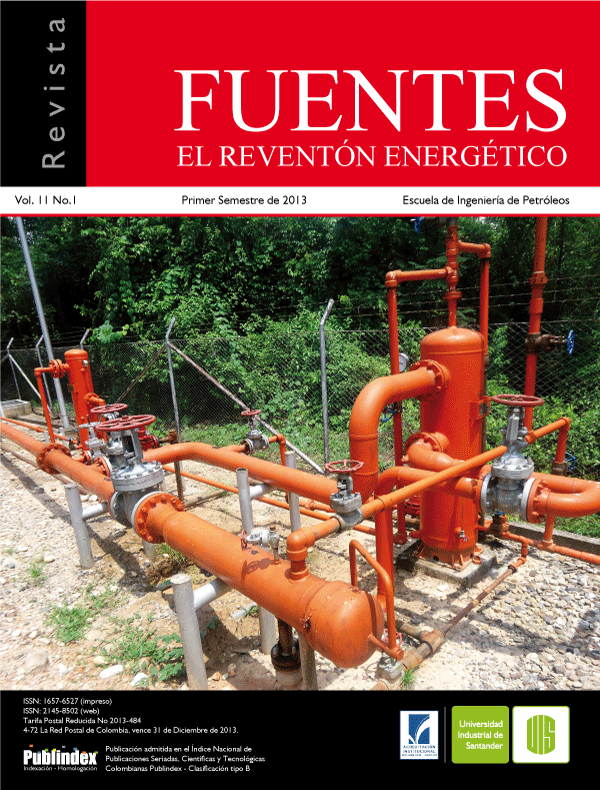Published 2013-11-06
Keywords
- Foamy oil,
- Nucleation,
- Heavy oils,
- Gas bubble geometry,
- Phase velocity
- Vertical flow ...More
How to Cite
Abstract
A fluid called Foamy Oil is defined as a continuous liquid phase with a high content of dissolved gas remaining in conditions where a gas associated with a conventional liquid would flow as separate phase. The analysis of this phenomenon in the industry has had a remarkable development based on heavy oil reservoirs because some reservoirs characterized as gas in solution mechanism type had a higher recovery factor than could be predicted for conventional reservoirs. This paper presents a numerical model to determine the behavior of nucleation phenomena considering its properties, especially the gas solubility because this redefines the bubble pressure value obtained conventionally,
since this sets the threshold at which the gas is redistributed in system, and the limits are defined according to the gas velocity in the liquid phase, for which a function of frequency probability distribution is proposed to define the bubble size distribution in the system and a limit through the forces balance obtained in a gas bubble, which marks the phases separation. The function obtained by this balance can modify the solubility of the gas in the liquid, thereby defining a gas content system conditions from the most probable value of bubble diameter separating which establishes a new approach to a function that helps to define the gas bubbles nucleation phenomenon in a foamy oil flow system in vertical flow.
Downloads
References
2. CHOWDHURY, Dipankar; SKALLE, Pal; MAHBUBUR, Rahman Mohammed. “Prediction of Stand Pipe Pressure Using Conventional Approach”, Chemical Engineering Research Bulletin [en línea]. 2009, vol 13, p. 7-11. Available online at: http://www.banglajol.info/index.php/CERB
3. DEvERUX Steve. Practical Well Planning and Drilling, Manual. Manual. U.S.A: Pennwell 1998. ISBN: 978-0-87814-696-3.
4. Drilling fluids Engineering Manual, MI SWACO. version 2.2, U.S.A 2009.
5. BAKERHUGHES Company. Drilling Reference Manual, 2006. Capítulo 9.
6. KELESSIDIS, v.C.; MAGLIONE, R. “Optimal determination of rheological parameters for Herschel–Bulkley drilling fluids and impact on pressure drop, velocity profiles and penetration rates during drilling”, Journal of Petroleum Science and Engineering. 2006, vol 53, p. 203-224.
7. ARGÜELLO REY, fabio Enrique; PRADA PALOMO, Katherine. “Estudio técnico y elaboración de una herramienta de cálculo para el diseño de un sistema integrado de circulación para la perforación de pozos”. Tesis de Pregrado. Director: Emiliano Ariza León. Universidad Industrial de Santander, Escuela de Ingeniería de Petróleos, 2011
